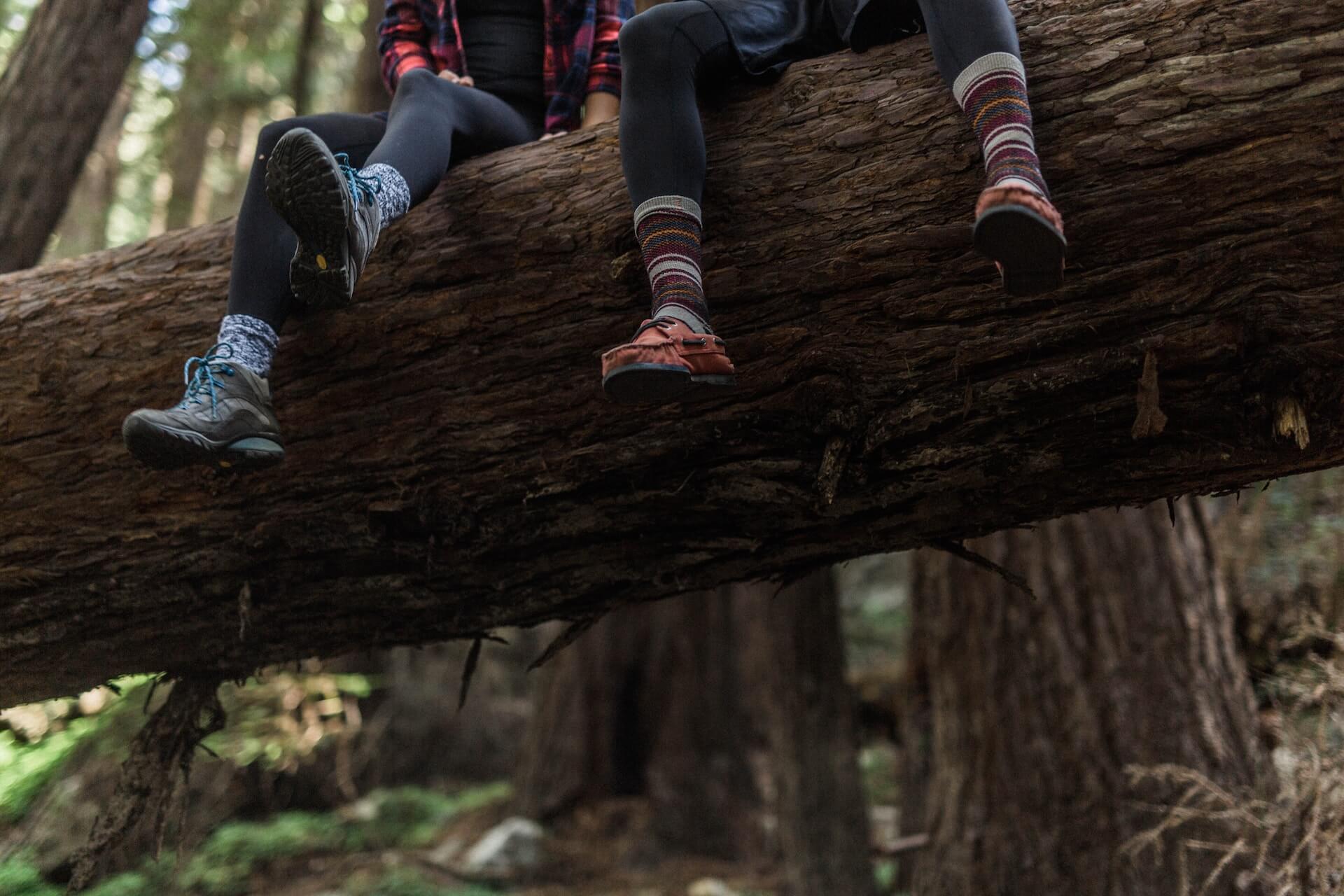
As an Amazon Associate, Modded gets commissions for purchases made through links in this post.
Hiking socks often make the difference between an enjoyable outdoor experience and a painful, uncomfortable one. Taking care of your feet is critically important for hiking, and it starts with a quality pair of socks. This guide contains everything you need to know about choosing the best hiking socks for your next adventure.
Why Are Hiking Socks So Important?
Any experienced hiker will tell you that they’re willing to spend extra money on socks and always take a few extra pairs on their overnight trips. Why does the hiking community take its sock selection so seriously? Hiking socks serve a handful of essential purposes:
- Temperature regulation: hiking socks are meant to regulate your feet’s temperature in conjunction with the outdoor temperature. Their breathability keeps your feet cool during the summer, and their thick insulation keeps your feet warm during the winter.
- Shock absorption: your socks must provide adequate shock absorption to ease the tension on your feet. Hiking poles can also help with shock absorption by transferring more weight to your arms and lightening the burden on your lower body.
- Blister prevention: the fabric of your socks needs to be soft on your skin so you don’t get blisters. Blisters can quickly turn your hiking trip into a disaster.
- Foot circulation: your hiking socks also promote good blood circulation in your feet, which prevents them from swelling and improves your performance.
- Moisture wicking: sweat increases your risk of developing foot blisters. Hiking socks are highly effective at moisture wicking and keeping your feet dry.
It’s important to understand and appreciate the various benefits that hiking socks provide. Now you can see why people are willing to spend up to $30 for just one pair of socks. Let’s get into the main feature of hiking socks that you should be familiar with — the fabric.
Hiking Sock Fabrics
The fabric of your socks is the most important detail. Your choice of fabric depends on many factors, including weather conditions, the length of your hiking trip and your personal hiking experience. These are the most common fabrics found in hiking socks:
- Wool: wool is the most highly recommended hiking sock fabric. It performs all of the aforementioned tasks with great effectiveness. Plus, since wool is naturally antimicrobial, it prevents bad odors too. Most socks you’ll find are made of an itch-free merino wool, which is more comfortable than regular ragg wool.
- Polyester: polyester is a synthetic material found in most clothing articles. It specializes in wicking moisture and drying quickly. It’s often blended with wool or nylon.
- Nylon: nylon is an elastic, durable fabric that strengthens wool and polyester when combined with each other.
- Silk: you can find silk in the interior lining of many hiking socks because it can quickly absorb moisture and it provides a soft, comfortable surface for the soles of your feet.
- Spandex: hiking socks also contain a small amount of spandex to improve their elasticity and help them conform to your foot’s shape.
Although wool and polyester are the most common fabrics by a considerable margin, you might find a combination of all five materials in your hiking socks. A hybrid material combines all of the benefits of each fabric into one sock.
Features to Look For
High-quality fabric is the most important aspect of your socks, but there are many other essential features you need to look for. Let’s go through the other important characteristics.
Height
The height of your socks depends on the weather conditions and what kind of shoes or boots you’re wearing. As a general rule, socks should get higher as the temperature gets lower. These are the different heights of hiking socks:
- No-show: these socks go below the ankles and offer little protection against abrasion from bulky boots. That’s why you should only wear no-show socks with hiking shoes or trail running shoes instead of boots.
- Ankle: these socks cover your ankle bone and offer more protection. They are best paired with low to mid-cut shoes and hiking boots.
- Crew: crew socks are the most popular and versatile height. They go a few inches above your ankle, protection against abrasion from boots with high cuffs. The only disadvantage is that crew socks might get uncomfortably warm on a hot day due to the extra coverage.
- Knee-high: You’ll only find a few options in the knee-high category, and they’ll probably be for mountaineering. High socks protect against abrasion that big, burly boots can cause around your shins and calves. The coverage can also help keep your lower legs warm when you’re climbing through the night and crossing glaciers.
Your socks must also fit properly. If they’re too tight, they will cut off circulation in your feet and cause swelling. If they’re too loose, they will chafe your skin and cause blisters.
Cushioning
Your socks should have extra cushioning around the heel, toe and sole. These sensitive areas are the most prone to blisters, so they need additional protection. The cushioning will prevent them from rubbing up against your boots or shoes, allowing you to hike pain-free. However, there is such a thing as too much cushioning. Too much cushioning can cause excessive heat insulation and quickly lead to sweaty feet.
Wicking
The best hiking socks have high wicking ratings and move moisture away from your feet. Keeping your feet dry helps with temperature regulation, blister prevention and circulation. It’s absolutely crucial that your feet stay dry on a hiking trip. Experienced hikers know to bring extra pairs of socks to ensure complete dryness.
Find Your Ideal Hiking Socks
There are lots of amazing socks available, but some of them might not fit your experience level or personal preference. That’s why you need to take all of these factors into consideration when choosing your socks. Use this guide as a template and you will find your ideal pair of hiking socks in no time!
Stay up to date with the latest by subscribing to Modded Minute.
Author
Jack Shaw is a senior writer at Modded. Jack is an avid enthusiast for keeping up with personal health and enjoying nature. He has over five years of experience writing in the men's lifestyle niche, and has written extensively on topics of fitness, exploring the outdoors and men's interests. His writings have been featured in SportsEd TV, Love Inc., and Offroad Xtreme among many more publications.





